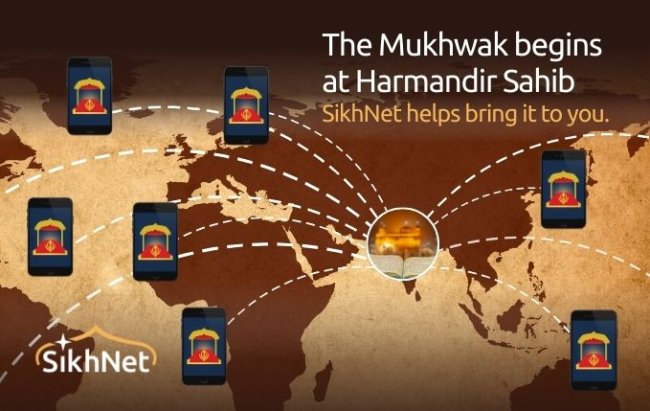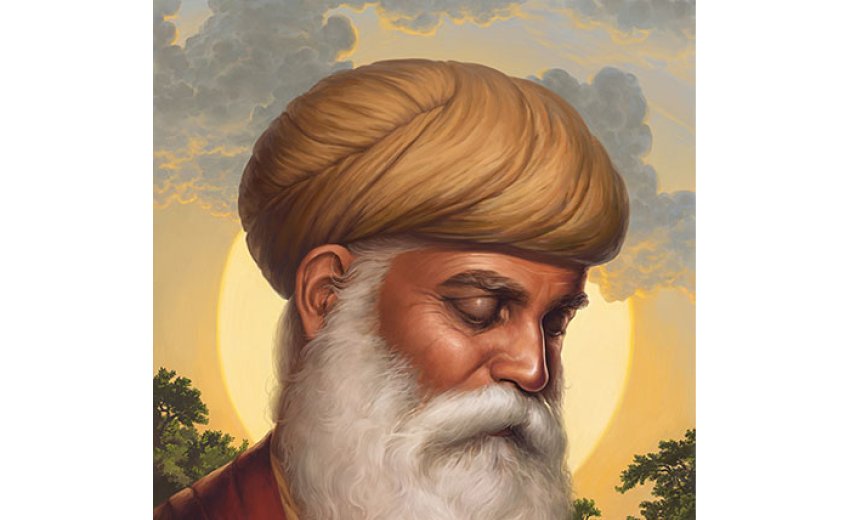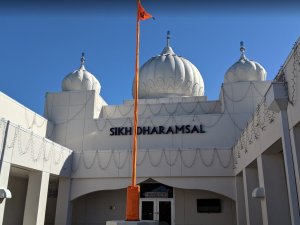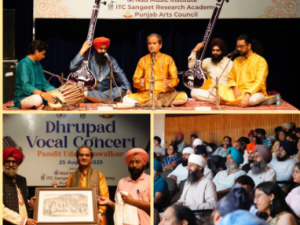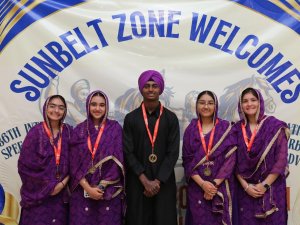Tripta Devi braced herself as she pushed the babe from her womb into the capable hands of Dualatan, the midwife of Village Talwandi.
“A boy,” she heard the midwife exclaim as she tended the infant.
“Wah!” Hearing her son took his first breath, she realized that she had been holding hers, and let it out softly “Guroo.”
The midwife marveled at the infant’s tranquil nature as she wrapped the newborn and settled him in his mother’s arms.
Tripta Devi’s five-year aged daughter, Nanaki, burst through the door first squealing delightedly, “I have a baby brother!”
Following his daughter, her husband, Kalu, quickly crossed the room in a single stride, took his wife’s hand in his and gazed proudly at his newborn son. “Thank you, wife, for honoring me with a son.”
“You are very welcome husband,” Mata Tripta replied happily. I’m exceedingly grateful to have been blessed to give you what you so desired.
Her parents entered the room quietly beaming their joy. Her mother patted Tripta’s face and straightened the bedclothes.
Her father, Rama, clapped her husband on the back, and elatedly announced, “We shall call your boy Nanak Dev, to commemorate his taking birth in home of maternal grandparents, as did his sister Nanaki”. Rama gave his granddaughter an affectionate squeeze.
The newly named Nanak Dev turned his face toward his family eyes twinkling. “Look he’s smiling. He knows me,” Nanaki declared, her voice tinkling. They all began to laugh merrily.
Outside a chill breeze parted dark looming clouds, and for an instant the moon cast a sliver of its welcoming light through the window onto the babe’s face. The first watch of morning had begun.
The babe’s grandfather turned towards his son-in- law. They hurriedly discussed a subject of great importance to them both. Mehta Kalu nodded in agreement to his father-in-law’s suggestion, and made a request of Dualatan. “We would like you to fetch Hardyal, the village priest and astrologer, as soon as my wife can spare you.” She nodded her acceptance and, not long after, set out to find the priest.
Before very long, Hardyal arrived and hastened into the house. After greeting the family, he fumbled with his papers, rolled out a scroll, and began making entries in preparation of a natal chart for their newborn son:
- Family Lineage:
- Mother – Tripta Devi
- Maternal Grandfather – Rama of Manja
- Maternal Uncle – Krishan
- Father – Kalyan Chand Das Bedi of Khatri clan, head accountant of village known throughout Talwandi as Mehta Kalu
- Paternal Grandparents – Shiv Ram and wife Banarasi
- Paternal Uncle – Lalu
- Sister – Nanaki
- Birthplace and Time*
- 1526 Bk Vaisakh
- Sudi, 3rd day of the light moon
- First of eight Pahar (watches of the day)
- Born in Village Talwandi Rai Bhoe Ki, Lahore District of Punjab
*(April 15, 1469 A.D., 3rd day of waxing moon, 3 hours preceding dawn, Born in Nankana Sahib, Pakistan)
Carefully considering the angles of sun, moon and stars, while pondering the infant’s disposition as described by the midwife, the astrologer regarded the babe for some long moments in the dawning light of new day, and recognized that a new era had also dawned. Noting the intelligence emanating from the babe’s countenance, divine light in eyes shimmering as does a guiding beacon, and a benevolence radiating from his entire newborn being, Hardyal realized himself to be in a unique presence.
Hardyal gathered the family about him and proclaimed the son of this family, Nanak Dev, to be the beneficiary of a profound spiritual nature. He told the family that son would acknowledge one God alone, but would respect, and be respected by, people of all faiths. He would be the master of all elements, and the name Nanak would be known in both the celestial abodes above and on earth. His regal Chatar or symbolic umbrella, the insignia of a prophetic dignity, would be spiritual canopy of the very stars themselves. The priest foretold that many would be influenced by his serene approach to life. He cautioned the parents to have patience, and to provide their son with every opportunity. With palms pressed together, the priest bowed to the family, and then to the babe. Bibi Nanaki looked on noticing that the babe, ever so subtly, returned the gesture. She clapped her hands together and uttered reverently. “Why my baby brother is a little Saint, He surely is.”
Guru Nanak Birth Celebration Controversy and Confusion
Controversy and confusion surround the date of Guru Nanak’s Devs Birth. The oldest manuscripts known as Janamsakhis (life story) give the month of Guru Nanak Dev’s birth as taking place in Vaisakh (mid-April) during the 3rd day of the new moon, while the newer Janamsakhis give his birth month as Katak (late October to early November) during the time of the full moon.
Notably, proponents of the 1823 A.D. missive Nanak Parkash attributed to Bhai Santokh Singh, the Katak 1526 Bk or November 1629 A.D. date, also cite his death as taking place on the 10th day of waning moon, in Assu 1596 Bk, or September, 1539 A.D. While professing Guru Nanak to have lived 70 years, five months, and seven days of age, observation of the Katak date is mathematically inconstant. The given age does however mathematically align with the Vaisakh date.
Up until 1872 Bk or 1815 A.D. celebrations held in Guru Nanak Dev’s birth place, Nanakana Sahib formerly Talwandi, took place during the month of Vaisakh. Only after that did the celebration shift to Pooranmashi, the full moon falling during Katak.
It is presumed that circumstances, conflicting ceremonies, and the inconvenience of festivals being held simultaneously in certain seasons, likely instigated the initial observance of celebrations commemorating Guru Nanak Dev’s birth to take place during the full moon Pooranmashi event. Such occurrences continue as Gurudwaras make choose different weekends to observe ceremonial dates, sometimes simply to share resources like parade floats.
Sikhs may choose one, or the other, date to celebrate, and even sometimes both. Confused by contradictions and uncertain how to proceed, a Sikh by name of Bhai Harbhagat Singh of Shaihid Ganj in Lahore, once presented the dilemma of dates to Siri Guru Granth Sahib writing by Vaisakh and Katak on two slips of paper. He then requested an illiterate boy who had bathed in a sacred tank to choose one. The boy picked up the paper which read Katak, which the Singh observed thereafter.
In the West since the origination of the fixed Nanakshahi Calendar, Guru Nanak Devs birth is celebrated April 14th, while in Punjab, Guru Nanak’s birth is likely to be celebrated colloquially in November on which ever day the full moon happens to fall on in the ever-fluctuating Indian Calendar.
With controversy and confusion continuing to abound, one might pose the question, “Is there ever a day in which our beloved Guru Nanak Dev’s s birth is not to be joyfully contemplated?”
References:
- Encyclopedia of Sikhism, Harbans Singh, Vol 3, p.166
- The Sikh Religion, Max Arthur Macauliffe, Introduction, Chapter VI, p. lxx, Chapter 8, p. lxxvi – lxxxvi, Book 1, Chapter 1, p. 1
- History of Sikh Gurus Retold, Surjit Singh Gandhi, Book 1, Chapter 2, p. 82, Appendix I, p. 450-455
- India Numismatics Table of Eras https://indiannumismatics.com/table-of-eras.php
